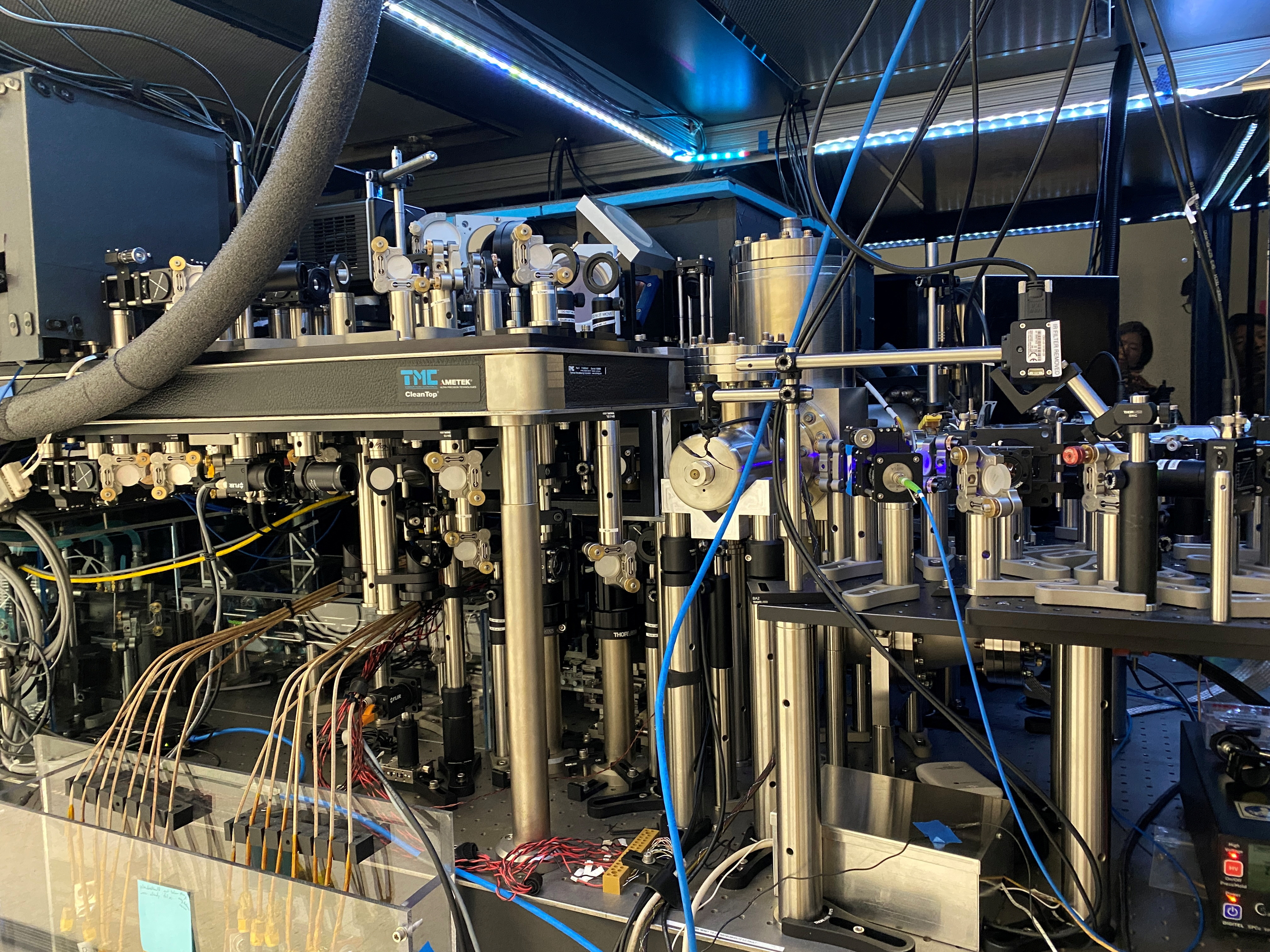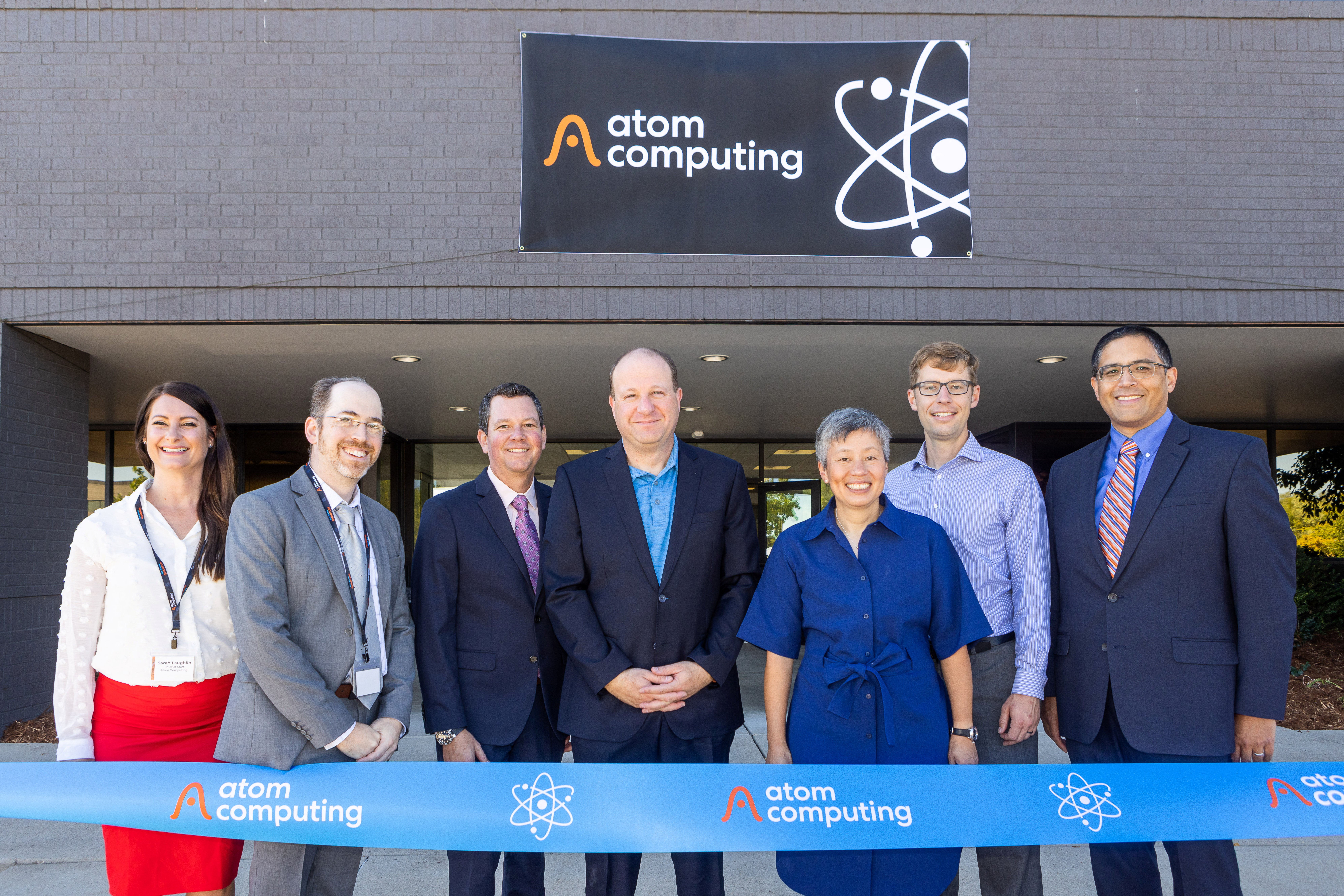Two (electrons) is Better than One
Kortny Rolston-Duce, Director of Marketing Communications
February 7th is National Periodic Table Day, a time to celebrate this ubiquitous chart.
While versions of element tables sorted by various properties or masses have existed throughout the centuries, the modern Periodic Table of the Elements emerged in the 1860s. It is arranged by increasing atomic number, which represents the number of protons in the nucleus of each atom.
Here at Atom Computing, we are partial to alkaline earth metals, members of group two on the periodic table. We use atoms of alkaline earth metals as qubits in our atomic array quantum computing hardware technology.
What are alkaline earth metals? What makes them well suited for our atomic array quantum computing technology? Dr. Mickey McDonald, Principal Quantum Engineer and Technical Lead, explains:
What are alkaline earth metals?
Alkaline earth metals are all the atoms that live in the second column of the periodic table. The column number corresponds to the number of electrons that are contained in the atom’s outermost shell. Alkaline earth metals have two. There are also a few atoms in the periodic table which don’t live in the second column but still share a very similar electronic structure—the so-called “alkaline earth-like metals.”
Why does Atom Computing use alkaline earth metal atoms as qubits?
There are two primary reasons. The first reason is that alkaline earth metal atoms captured in optical tweezers will oscillate at very high frequencies with high stability. For decades, researchers at places like the National Institute of Standards and Technologies (NIST) have pioneered the use of these long-lived “metastable” states to create extremely fast clocks that harness quantum effects to measure time to incredible precision. We leverage the techniques used for timekeeping and apply them to our quantum computers.
The second reason is the structure of an alkaline earth atom guarantees that certain pairs of energy levels called “nuclear spin states” will be insensitive to external perturbations. In atoms with only a single outer-shell electron, that electron’s “spin” can couple strongly to external magnetic fields and the various angular momenta of the rest of the atom’s structure. That coupling leads to drifts that can interfere with the qubit’s coherence. The spins of the two electrons present in alkaline earth metals “cancel out” in a way that makes certain energy levels much less sensitive to ambient fields.
What are the benefits of nuclear spin qubits?
Structure-wise, the electron outer-shell electron in alkaline earths is the big difference and what allows us to create these very environmentally insensitive nuclear spin state qubits. Once we encode quantum information in the nuclear spin states, the information remains coherent for tens of seconds because the nuclear spin states are so well-protected from the environment.
Another benefit is a little more esoteric, but very exciting to me as an engineer and a physicist. We use a technique called “laser cooling” to prepare samples of atoms at temperatures only a few millionths of a degree above absolute zero, which involves shining carefully tuned lasers at atoms and extracting a bit of energy from them one photon at a time. Alkaline earth atoms have a structure complex enough to allow several different colors of laser to be used for this cooling. We combine those different colors to rapidly produce samples of atoms at microkelvin temperatures, whereas other species of atoms require cooling schemes to be more complicated and take longer to reach such low temperatures.
What else makes alkaline earth metal atoms attractive for quantum computing?
We can use the atomic level structure kind of like a Swiss army knife. Certain states are good for cooling, others are good for storing quantum information, others are good for driving entangling operations. These unique characteristics make neutral atom qubits and Atom Computing possible!

